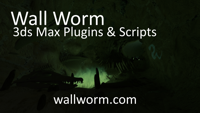Understanding How to Set Up Paths
Many new users of WWMT find themselves confused when it comes to the setup of WWMT. This is primarily because there are some specific paths you must set correctly for the automation of WWMT to work.
Making Facial Animations
This page explains how to export your facial animations into Source. Facial animations are done using a different procedure than most animations in Source.
Making $jigglebones in 3ds Max for Source
$jigglebones are bones that can automatically generate secondary motion without being animated. Making a $jigglebone in WWMT requires you to use the hierarchy tab in the command panel, which may be a new area for less experienced modelers.
Making Ragdolls in 3ds Max for Source
Making a ragdoll requires you to use the hierarchy tab in the command panel, which may be a new area for less experienced modelers. Watch the video here to get a basic overview of how to make a ragdoll for Source.
Generating LODs
The Level of Detail Generator on the Level of Detail Tools Rollout lets you generate LOD models from the root mesh. The tool will make lower-res versions of your model so that less polygons are rendered in-game when players move farther away.
Export Body Groups | $bodygroup
You can export body groups ($bodygroups) directly into Source in 3ds Max.
Export Multiple Texture Skins
You can give your model multiple skins (textures) so that the same mesh can look differently in different uses.
Export Textures
How to export your model textures from 3ds Max to Source.
Collision Hulls in 3ds Max for Source
Using WWMT in 3ds Max to create your model's collision hull with the Quick Hull feature.
Exporting Your Static Prop
Basic explanation on using WWMT to export your static prop into Source.





